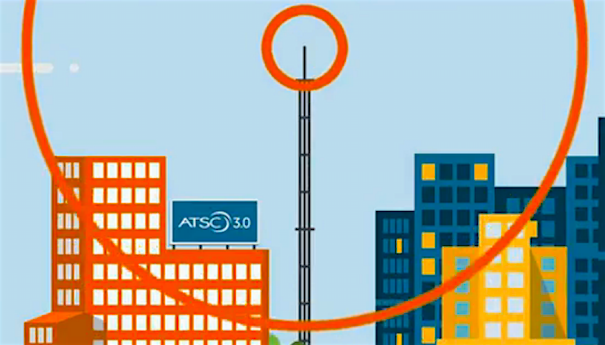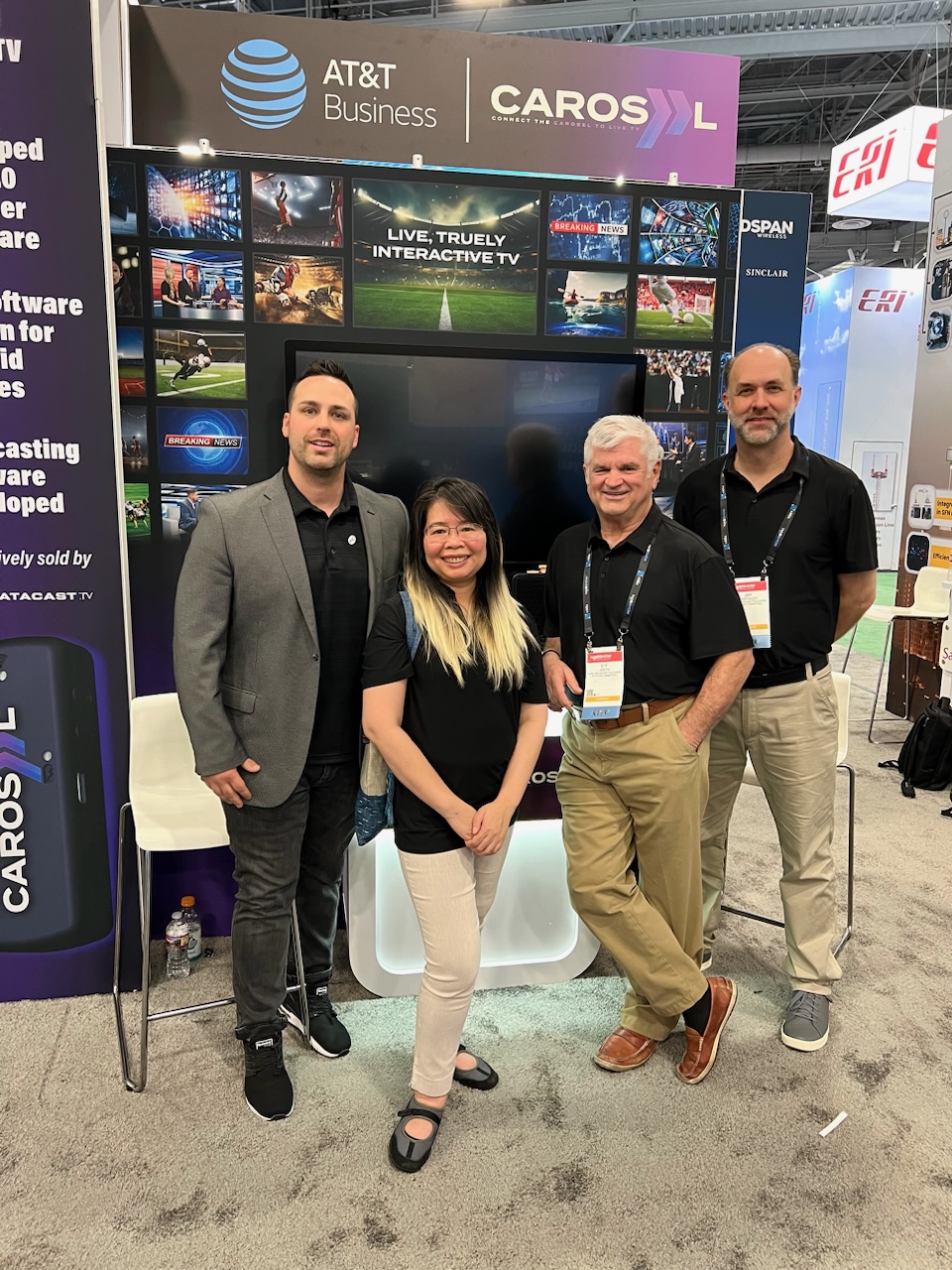
The 2024 edition of the NAB Show will be remembered as a turning point in the effort to make ATSC 3.0-based datacasting a profitable proposition.
Sinclair Broadcast Group advanced its goal of monetizing spectrum from datacasting with the announcement of its Broadspan datacasting platform (see p. 25). AT&T Business was on the show floor in the ATSC booth discussing a significant upcoming trial of 3.0 datacasting that will lead to a Q4 2024 commercial launch for business clients, and a new venture, Peak3, informed public broadcasters at Public Media Venture Group (PMVG) TechConnect one day before the show about its efforts to sell 3.0 datacasting services to Internet of Things (IoT) customers.
Data Verification
The new Broadspan platform gives businesses a way to distribute data over the air to any device with a 3.0 receiver. Leveraging the broadcast core network Sinclair announced at the 2023 NAB Show, the platform enables customers to plan, order and validate delivery of their data.
“They [customers] can immediately visualize network availability and order distribution tailored to their needs with a full picture of the path their data will take through the network,” said Sinclair CEO Chris Ripley during the company’s NAB Show press conference.
Initially, Sinclair is making Broadspan available in the 30-plus markets where it is serving as the 3.0 host station; however, the company wishes to work with other broadcasters to grow the service, he said.
There are a couple of key takeaways from the Broadspan announcement. First, Sinclair already has a taker for Broadspan. Content delivery network Edgio will use the platform to deliver data over the air that supplements internet streamed content from OTT subscription services to give viewers access to 4K video.
Second, the excess bandwidth available on Sinclair’s 3.0 host stations available for Broadspan is 9Mbps for delivery to stationary receivers, said Ripley. While at first glance that may seem paltry when compared to median U.S. mobile and fixed broadband speeds of 130Mbps and 250Mbps, respectively, such a comparison misses the point.
“It’s apples and oranges,” said Ripley. “When we say 9Mbps, that covers an entire geography…. multiply that by the number of people it covers, you’re going to get very, very big numbers in terms of total capacity.”
AT&T Joins ATSC
On the floor in the Las Vegas Convention Center West Hall, AT&T Business was full of surprises. The first was that the company joined the Advanced Television Systems Committee within the past two months. It is interested in using ATSC 3.0 as a business solution for wireless data delivery, said Cy Smith, founder and CEO of CY Networks, which recently has been hired by AT&T Business to provide engineering services related to 3.0 datacasting.
(Read: NextGen Datacasting: There's Money to be Made)
CY Networks makes a small, portable ATSC 3.0 receiver called Caros>>l (pronounced Carousel) that can receive and parse a 3.0 data stream and offers support for linear, real-time as well as non-real-time datacasting.
The second surprise is AT&T Business this summer will launch a pilot program using 3.0 OTA data delivery to Caros>>l receivers for digital signage applications at its own retail locations—rather than fiber circuits or 5G, said Smith, adding that if all goes as expected AT&T Business will launch a 3.0-datacasting service for businesses before the end of the year.

AT&T Business is talking to “OTA Wireless”—the E.W. Scripps-Nexstar Media Group datacasting venture—about securing 3.0 bandwidth and is “hoping to work with everybody that wants to work with us” to secure bandwidth, said Smith.
IOT Potential
Peak3 also sees the potential of 3.0 for datacasting and has raised venture funding to become a mobile virtual network operator (MVNO) to provide data IoT solutions for enterprises, said Alp Sezen, Peak3 CEO, who spoke at PMVG TechConnect.
Peak3 has inked a deal with Sinclair for 3.0 bandwidth and is weeks away from signing a deal with OTA Wireless as well, said Sezen, who was at the conference to find a way to work with public broadcasters as well. The company already has customers that will soon deploy, including a June rollout in Seattle and another that will launch later in Denver, he said.
IoT customers do not care about whose network is used to deliver their data; they simply care that their IoT devices can receive that data when it’s transmitted. “We feel we can do that on a national basis [leverage ATSC 3.0]” he said.
Sezen noted Peak3 has overcome a pricing impasse that made its launch difficult. The problem stemmed from the newness of 3.0 datacasting. Broadcasters, fearing they were leaving money on the table, were reluctant to assign a value to their 3.0 bandwidth available for datacasting. The solution proved to be a revenue split that would assure broadcasters their capacity was optimally priced.
Together, all of these developments demonstrate ATSC 3.0-based datacasting isn’t just technically possible, but more importantly that it is a viable, new revenue source that will benefit the bottom line of broadcasters.
Perhaps at the 2025 NAB Show, there will finally be some movement on a way to sunset ATSC 1.0 so that NextGen TV—including ATSC 3.0 datacasting—can begin living up to its full potential.







